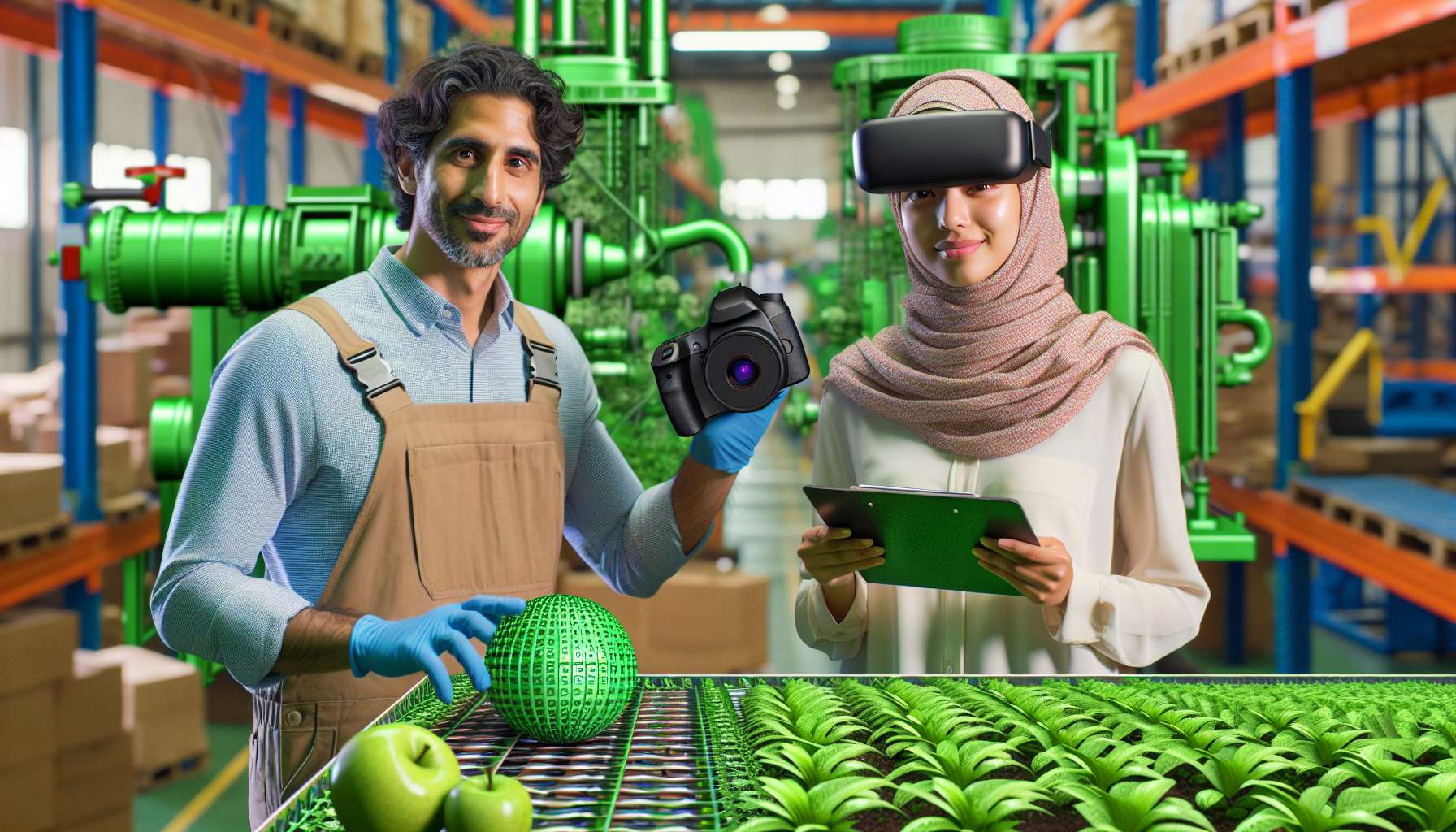The Role of AR in Sustainable Practices
As the world becomes more conscious of the environmental impact of manufacturing processes, businesses are increasingly looking for innovative solutions to promote sustainability. Augmented Reality (AR) has emerged as a powerful tool that not only enhances productivity and efficiency but also contributes to sustainable manufacturing practices. In this article, we will explore how AR can revolutionize the manufacturing industry and help businesses achieve their sustainability goals.
Reducing Waste and Energy Consumption
One of the key benefits of AR in sustainable manufacturing is its ability to reduce waste and energy consumption. Traditional manufacturing processes often involve trial and error, leading to material waste and increased energy usage. AR technology allows manufacturers to visualize and simulate products and processes in a virtual environment, enabling them to identify and rectify potential issues before physical production begins. By minimizing errors and optimizing production workflows, AR helps reduce waste and energy consumption, making manufacturing processes more sustainable.
Streamlining Training and Knowledge Transfer
Another area where AR excels is in training and knowledge transfer. In manufacturing, training new employees and transferring knowledge from experienced workers to novices can be time-consuming and resource-intensive. AR-based training programs provide an immersive and interactive learning experience, allowing employees to acquire skills and knowledge more efficiently. By reducing the time and resources required for training, AR not only improves productivity but also contributes to sustainable practices by minimizing the need for excessive training materials and energy consumption.
Optimizing Maintenance and Repair Processes
Maintenance and repair processes are crucial for ensuring the longevity and efficiency of manufacturing equipment. AR technology can play a significant role in optimizing these processes, leading to reduced downtime and increased sustainability. By overlaying digital information onto physical equipment, AR enables technicians to access real-time data, step-by-step instructions, and remote expert assistance. This not only improves the accuracy and speed of maintenance and repairs but also minimizes the need for physical manuals and unnecessary travel, resulting in cost savings and environmental benefits.
Enhancing Supply Chain Management
AR can also revolutionize supply chain management, contributing to sustainable manufacturing practices. By leveraging AR, businesses can gain real-time visibility into their supply chains, enabling them to track and optimize the movement of raw materials, components, and finished products. This enhanced visibility helps reduce waste, minimize transportation emissions, and improve overall supply chain efficiency. Additionally, AR can assist in identifying and addressing bottlenecks, optimizing inventory management, and promoting sustainable sourcing practices.
Driving Innovation and Collaboration
AR technology fosters innovation and collaboration within the manufacturing industry, which is essential for driving sustainable practices. By enabling virtual collaboration and remote communication, AR breaks down geographical barriers and allows experts from different locations to work together seamlessly. This promotes knowledge sharing, accelerates problem-solving, and encourages the adoption of sustainable manufacturing practices across the industry. Furthermore, AR can facilitate the design and development of eco-friendly products by providing real-time feedback and simulations, helping businesses create sustainable solutions that meet customer demands.
The Future of Sustainable Manufacturing with AR
The potential of AR in promoting sustainable manufacturing practices is vast and continues to evolve. As the technology advances, we can expect to see further integration of AR with other emerging technologies such as Artificial Intelligence (AI) and Internet of Things (IoT), creating a powerful ecosystem that drives sustainability in manufacturing. From energy-efficient production processes to eco-friendly product designs, AR will play a pivotal role in shaping the future of sustainable manufacturing.
In conclusion, AR is not just a tool for enhancing productivity and efficiency in manufacturing; it is also a catalyst for promoting sustainable practices. By reducing waste, streamlining training, optimizing maintenance, enhancing supply chain management, and fostering innovation, AR empowers businesses to achieve their sustainability goals. Embracing AR technology is not only a smart business move but also a step towards a greener and more sustainable future.





